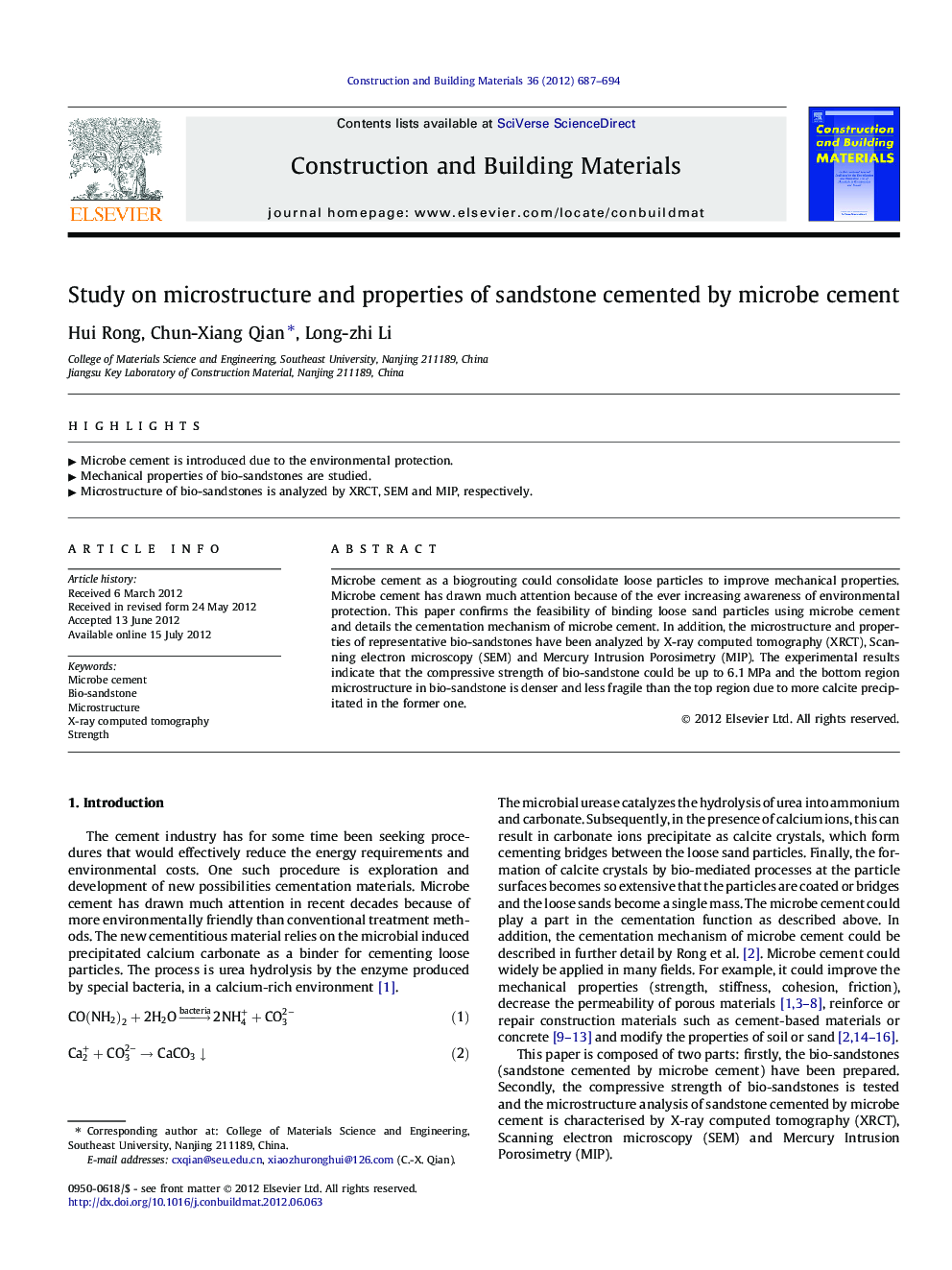| Article ID | Journal | Published Year | Pages | File Type |
|---|---|---|---|---|
| 258670 | Construction and Building Materials | 2012 | 8 Pages |
Microbe cement as a biogrouting could consolidate loose particles to improve mechanical properties. Microbe cement has drawn much attention because of the ever increasing awareness of environmental protection. This paper confirms the feasibility of binding loose sand particles using microbe cement and details the cementation mechanism of microbe cement. In addition, the microstructure and properties of representative bio-sandstones have been analyzed by X-ray computed tomography (XRCT), Scanning electron microscopy (SEM) and Mercury Intrusion Porosimetry (MIP). The experimental results indicate that the compressive strength of bio-sandstone could be up to 6.1 MPa and the bottom region microstructure in bio-sandstone is denser and less fragile than the top region due to more calcite precipitated in the former one.
► Microbe cement is introduced due to the environmental protection. ► Mechanical properties of bio-sandstones are studied. ► Microstructure of bio-sandstones is analyzed by XRCT, SEM and MIP, respectively.
